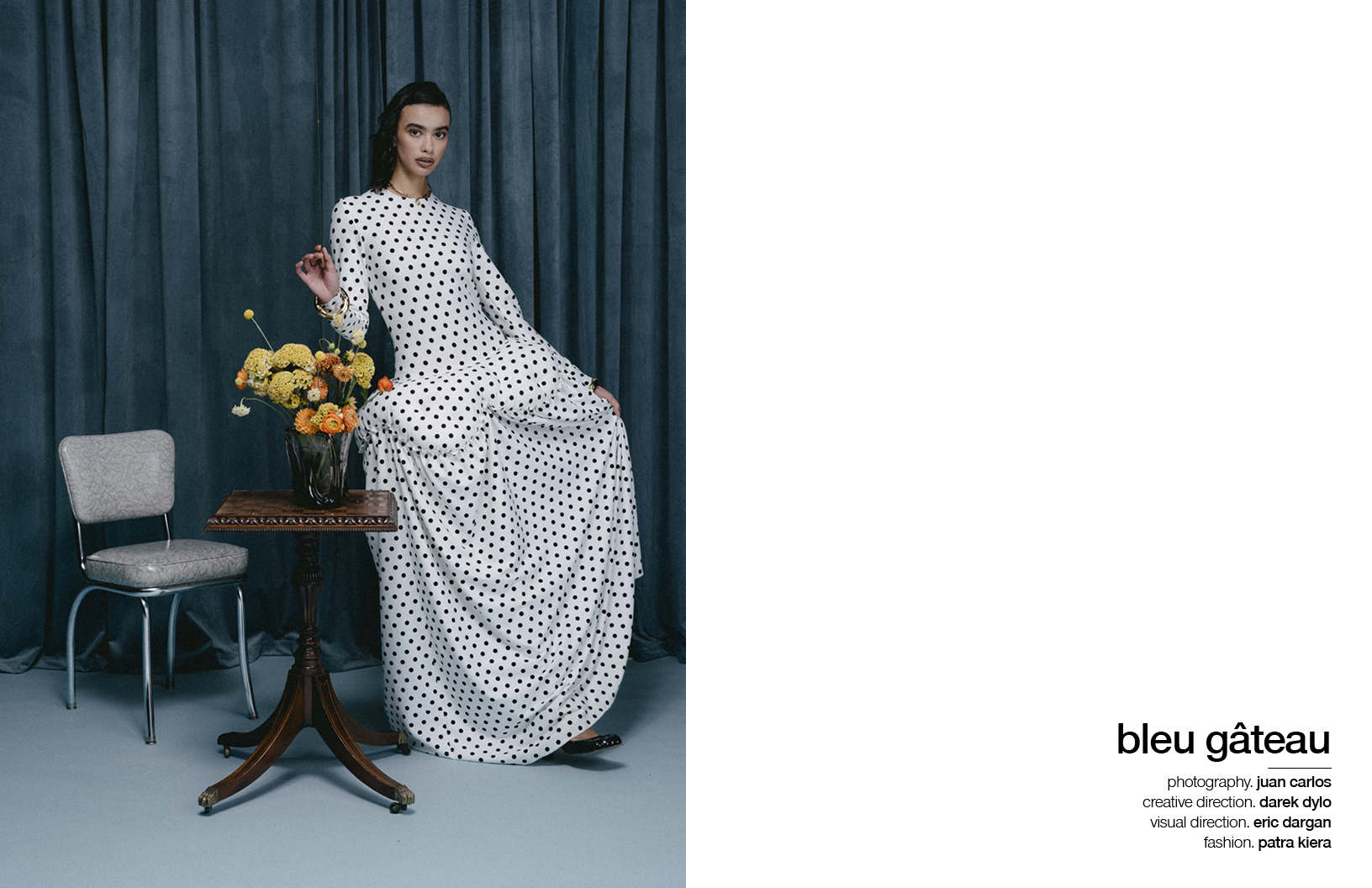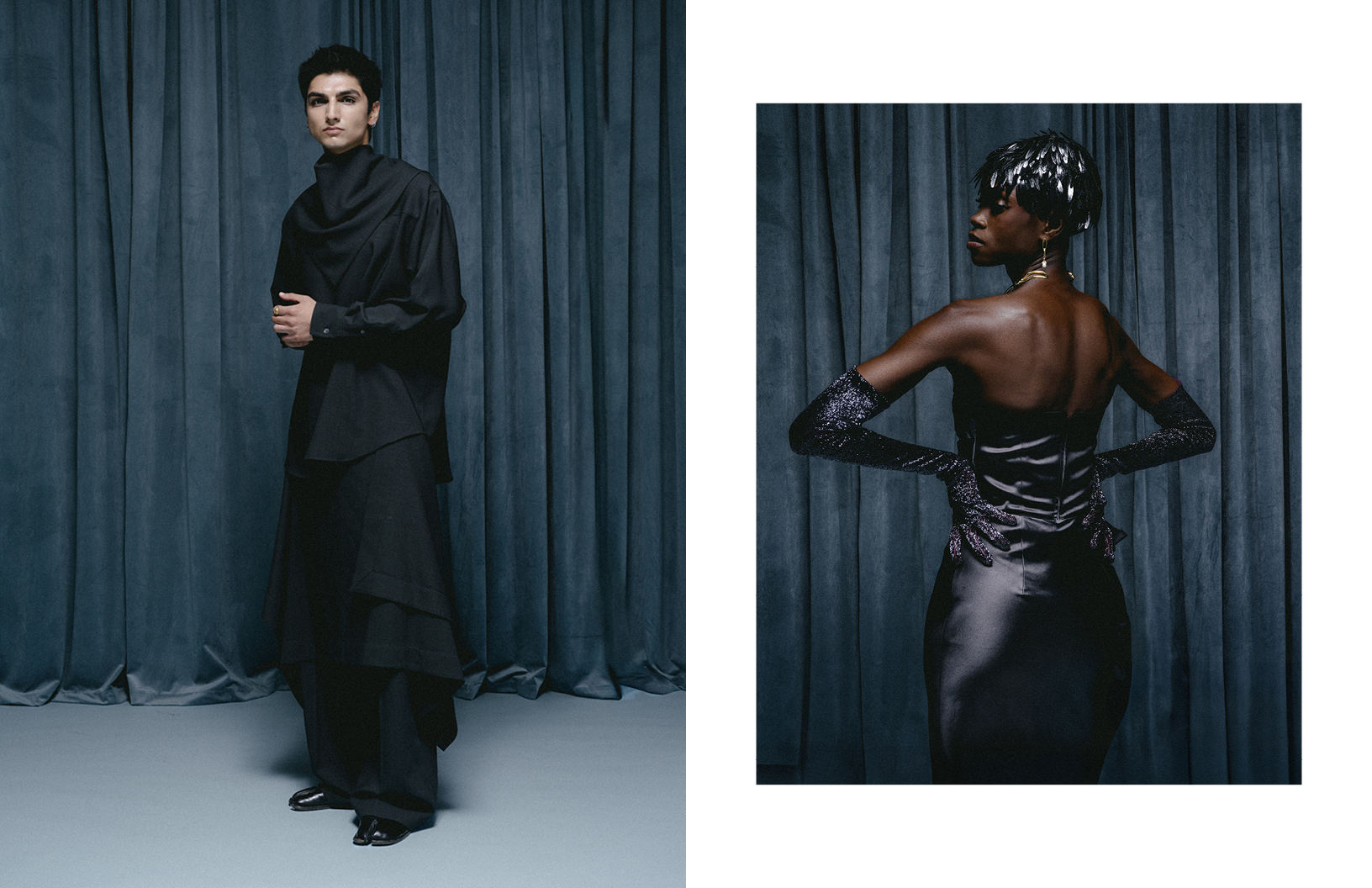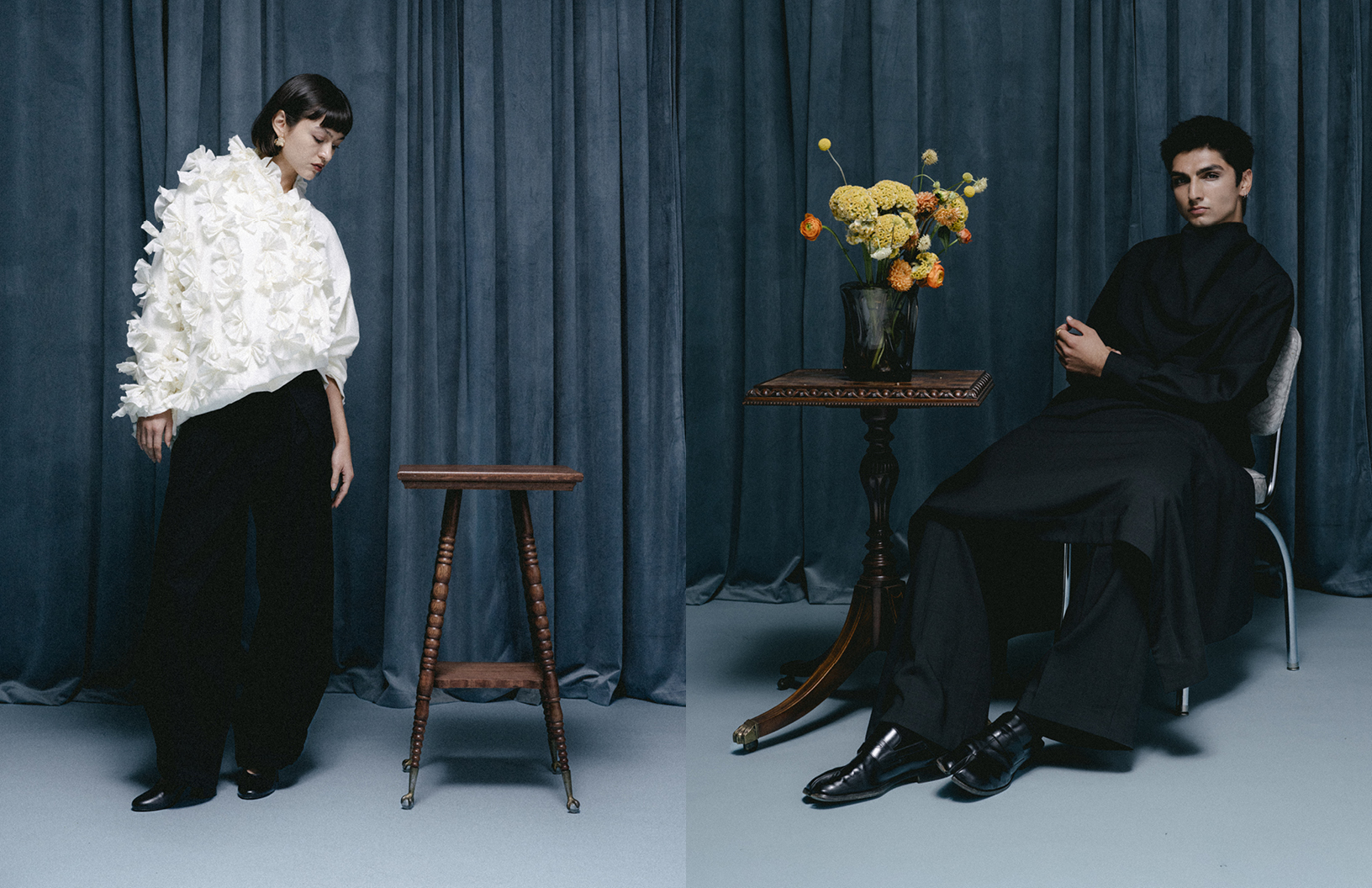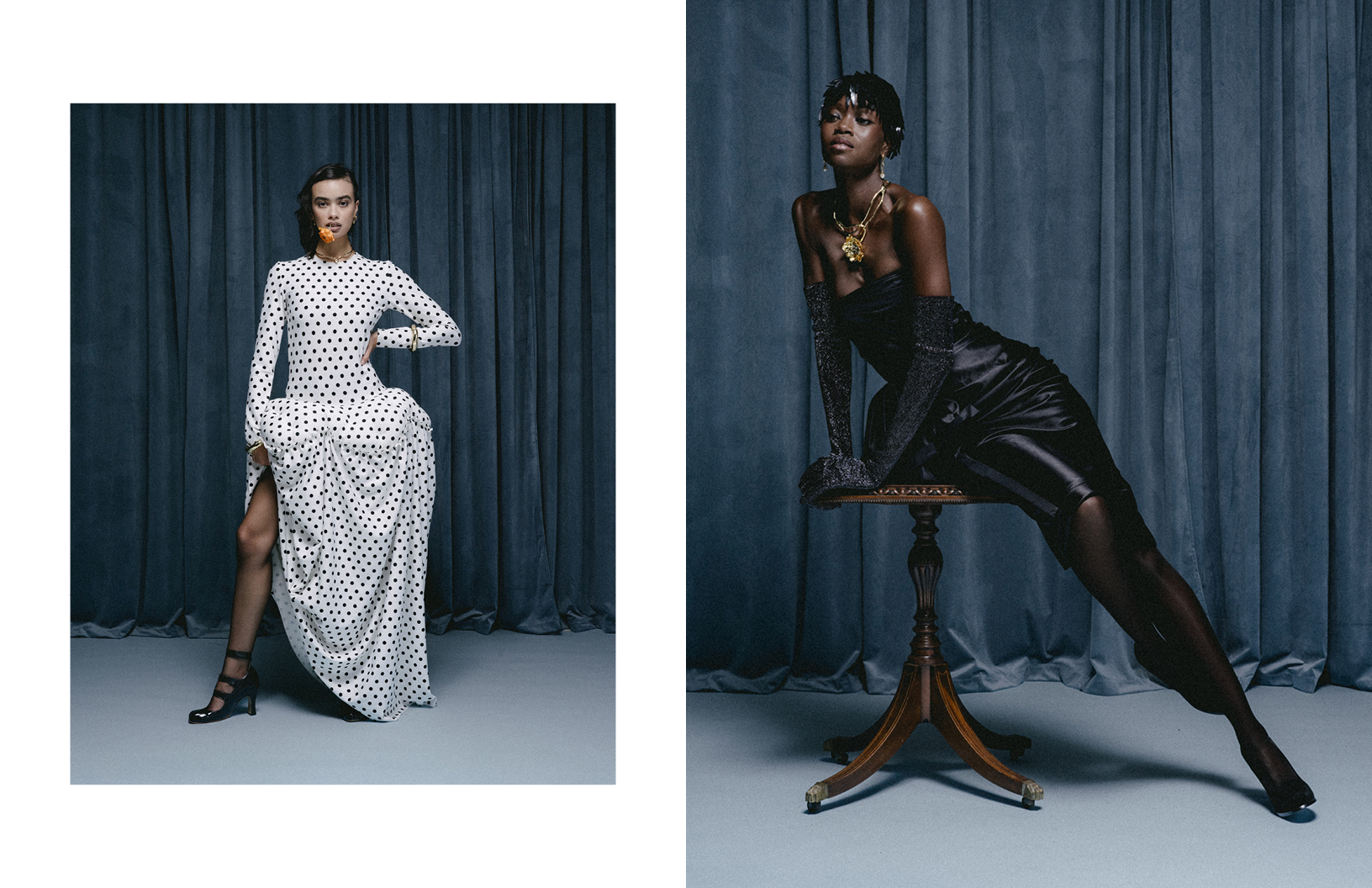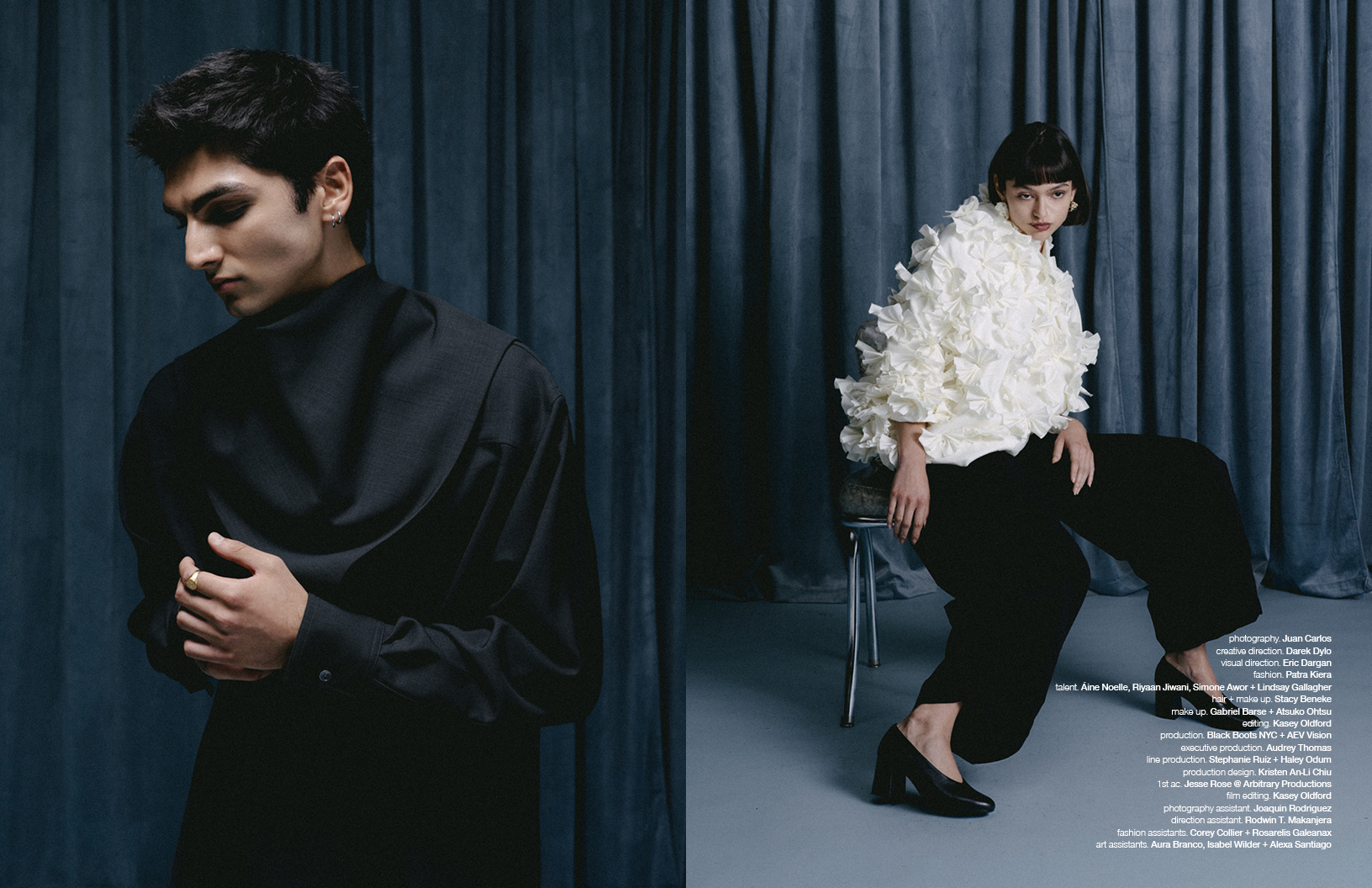It’s in the power of the new generation of design talent to craft a new worldview: with her up and coming brand GIMA.A, Giulia Farencena Casaro combines a deconstructive approach to garments with lyrical flair. She demonstrates an intricate understanding of the hegemonies of religion: exploring the relation between individuals and spirituality, her Autumn/Winter 2017 collection, Pray For Me, detects the blurred lines of social media and religious codes, capturing the very specific nature of the relation between individuals in a digital era. Schön! speaks to GIMA.A founder Giulia Farencena Casaro to uncover her vision for the potential of fashion, which for her is able to lead to a “comprehension of differences, and the composition of opposites.”
What are the most important moments of your studies at Polimoda in Florence?
At the beginning it was a bit of a shock, but eventually I understood the world I wanted to be part of. The most important thing that I learnt is dedication: creative works have a beginning but never an end, and they even continue when I sleep. Also, I have learned the fundamental importance of finding a method in my creativity; I have to balance the drawings in my mind with those that are the real needs of customers.
How do you think growing up in a bi-cultural environment, with a bilingual upbringing, affected your worldview?
Sometimes I think that the bicultural experience represents a blessing and a curse. To grow up in a reality like in South Tyrol where the relationships between several ethnic minorities are not always idyllic represented an opportunity to learn; I saw how the strong rules typical of Central-European cultures collide or dissolve with the sense of spontaneity typical to Mediterranean culture. Seeing this growing up surely has made my worldview more profound and complex, and I think it has prepared me to better understand the changes happening in society.


What potential does fashion have to make statements in the way of social-cultural critiques?
In my view, all human activity has socio-cultural relevance, and I think it’s in fact impossible to separate it from society’s problems. I am strongly influenced and sensitive to the world and the society that surrounds me, and my approach to design has always addressed something inherently human. I intend to devote myself strongly to this because I believe that design can be a tool that can influence people’s world views.
Walk us through your collection, Pray For Me: what role does religion play?
I had a Christian education and so understand profoundly the values of this religion, but also the great wounds that the Church has been involved in inflicting. I look for a simple and profound spirituality and this plays a central role in the collection. I also tried to decontextualize some Christian symbols in an iconoclastic way, to show the necessity or need of the individual to find their own spirituality.
How do you connect personal beliefs and global politics? How do they come together in this collection?
The political aspect is a logical consequence of my vision of religiousness, as well as the individual’s path to spirituality with nature and technology. The title of my collection is born through the distorted function of social networks; I find the way social channels facilitate the misuse of religious symbols and ritual troubling.



Your treatment of fabrics is particularly impressive – how do you work with textiles? What part do they play in the design process?
Textiles are really important for my research, and I love to experiment with traditional materials and combine them with unusual ones, like the penicillin moulds I extracted from cheese. This was directly inspired by the eccentric habits of Erik Satie, who was known to nourish himself only with white foods, and among them, mould.
Why did you turn to Erik Satie for inspiration for this collection?
Erik Satie has been a huge inspiration for me. I’m used to working with background music and one time by chance I heard his Gymnopédie N°1. I eventually started researching the personality and habits of its composer, and learned about restless, non-conformist personality. Satie was a protester of the common habits of the Parisian bourgeois in the late nineteenth century. Who else could I find who established their own religion and be the only member?!
How do you manipulate and reinvent gender through your designs? How would you define masculinity / femininity?
I believe that an open-minded society must take into consideration all the facets of a human’s personality, including sexuality. In my collection I worked on the concepts of male and female, and tried to incite a harmonious dialogue between the two.
Where do you see your work evolving to in the coming seasons?
I will try to keep experimenting with new materials. I am attracted to organic materials derived from vegetal and animal micro-organisms and I would also like to take into consideration the challenge of recycling. Furthermore, I am taking into a closer look new ways of communication between human beings.
Discover Giulia Farencena Casaro’s collection here.
Photography & Fashion / Szilveszter Makó
Model / Camillo Majerczyk @ DNE Management
Clothes / Giulia Farencena Casaro























































